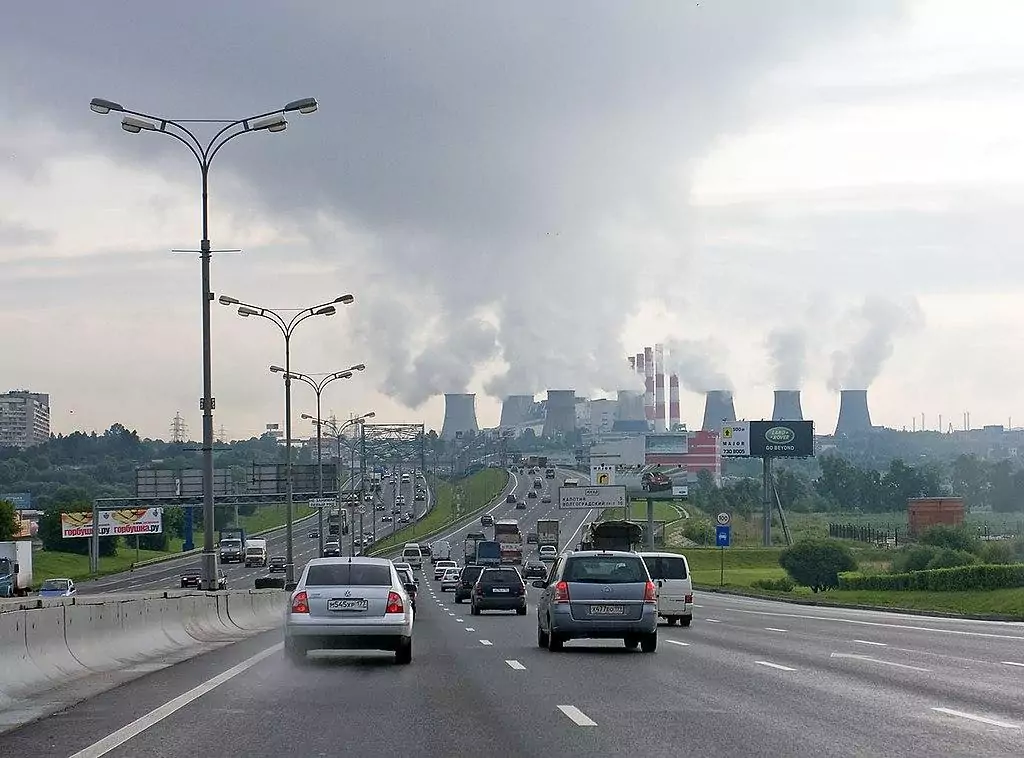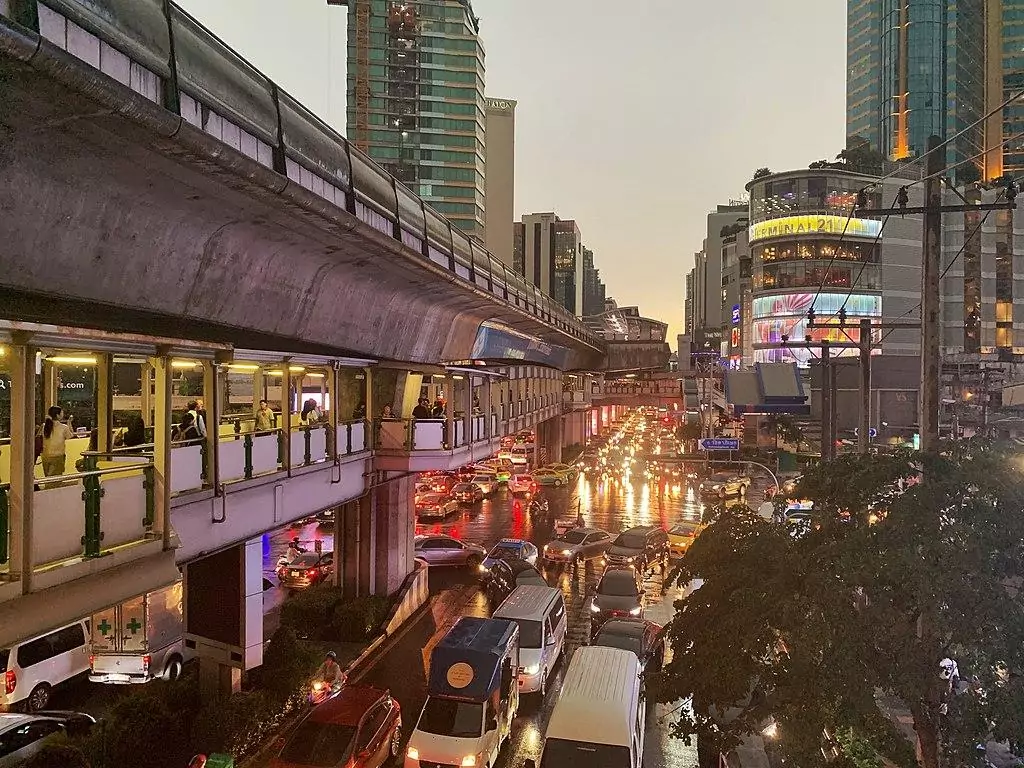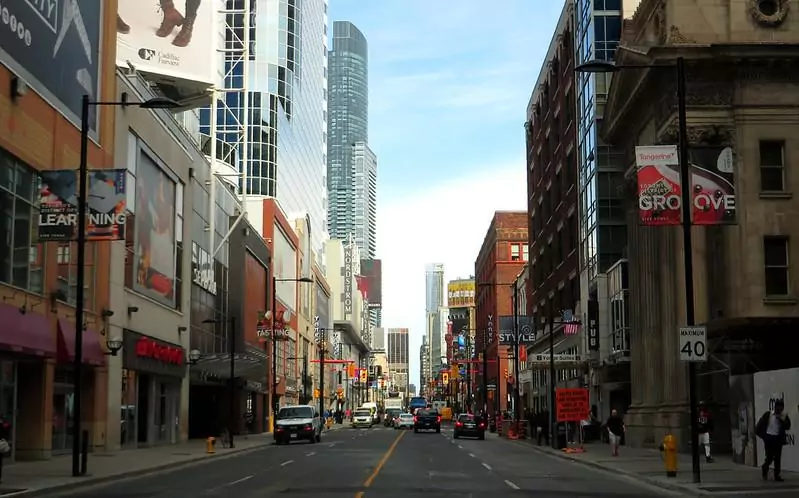
When we think about streets, it is the buzzy boulevard we frequent for shopping or a random quiet route we pass through that often comes first to mind. However, our world is also home to some mind-bogglingly long streets, blurring the line between a street and a road. Some cases are so extreme in fact that strolling along such a street would take you an entire day or more. So, prepare your sturdy footwear and let’s explore the world’s longest streets.
Located about 300 kilometers northeast of Almaty, Tekeli is a low-key town in Kazakhstan’s far south. Thanks to the region’s rich deposits of zinc, lead, germanium, cadmium and silver, this remote settlement served as a mining town throughout the soviet era. Story has it that during the Second World War, every eight bullet used by the Red Army was manufactured at the town’s metal processing plant.
The lead factory as well as the railway tracks, whereby the locally-made weaponry was once transported, are both nestled along Kunaev Street. At a length of 38 kilometers, this unassuming street is not only the longest street in Kazakhstan, but also among the world’s lengthiest ones. Named after Dinmukhamed Kunaev, the first Secretary of Kazakhstan’s Communist party, the street spans from the town’s industrial zone westwards to its sparsely populated outskirts.
Depending on your walking pace, it would take anywhere between 6 to 8 hours of seamless walk to go from one end to another. If you do take this challenge, you’ll have a glimpse of the snow-capped Dzungarian Alatau Mountains that surround the town from north and south. Other attractions along the way include the confluence of three rivers and an uphill lookout, bestowed with spectacular views of Tekeli and its surroundings.

Tekeli's Main square during the Nowruz festival. Kunaev Street is wedged between the city center and the snow-capped Dzungarian Alatau Mountains
photography by: Stomac/ Wikimedia Commons
Amid the ever-growing traffic problems of Moscow during the 1950’s, the Russian capital was desperate for a brand-new highway that will divert incoming vehicles from the city’s main roads. Inaugurated in 1961, Moscow Ring Road, otherwise known as MKAD (Moscow Automobile Ring Road), originally had a total of 4 lanes, featuring a series of interchanges along its route. In the late 1990’s, MKAD underwent a thorough upgrading when six lanes were added to the already existing four, while all traffic light-intersections were replaced with interchanges.
Up until 1984, the 108.9-kilometer-long road also served as Moscow’s municipal border. Following the annexation of several adjacent settlements which lie beyond the outward boundaries of MKAD, the road no longer marked the city’s jurisdiction. Nevertheless, many Muscovites still joke about the uncivilized world that lurks across the highway, referring to MKAD as the border between Moscow and Russia. Despite its utilitarian nature and name, MKAD is classified first and foremost as a street and not as a highway as one might expect.

MKAD, or Moscow Ring Road
photography by: Sergey Ashmarin/ Wikimedia Commons
Prior to 1964, Primorskoye Highway (Приморское шоссе) was just a cluster of interconnected roads and streets, stretching from Saint Petersburg all the way to the Finnish border. As local authorities sought to improve the connectivity between St. Petersburg and its northern suburbs, the different segments were patched together into a single street. The highway stitching process was followed by the construction of a series of interchanges and infrastructure improvement projects which made it one of the city’s most important traffic routes.
The 170-kilometer-long road, which starts at the intersection of Planernaya and Savushkin streets in St. Petersubrg and ends at the border town of Vyborg, offers a scenic drive along the Gulf of Finland where the region’s dense forests meet the waters of the Baltic Sea. Officially categorized as a street, Primorskoye Highway is awash with hidden gems along its shoulders, making it a favorable route for a road trip. Among its conspicuous sites are dozens of stone dachas and houses, where famous Russian figures formerly lived, including the globally-renowned composer, Dmitri Shostakovich.
Another interesting spot is the ” Girl with a Bouquet” sculpture in Olgino Village at the outskirts of St. Petersburg. Recently relocated from the major intersection of Primorskoye Highway and Primorsky Prospekt, the bronze statue was erected in 1939 by a prominent Soviet sculptor, named Elena Alexandrovna. The monument, which was inaugurated at the end of the Finnish War as a symbol peace, famously greeted drivers who made their way into the city from the north. The venerated statue is only a couple of kilometers away from yet another landmark along Primorskoye, Lakhta Center. At a height of 462 meters, the skyscraper is not only the tallest building in Russia, but also across Europe.

The wide confines of Primorskoye Highway
photography by: Grigorius m/ Wikimedia Commons
For an outside observer, Sukhumvit Road might seem like a mere highway, connecting some of Thailand’s most important cities with the capital. But as it turns out, this 491-kilometer long throughfare is referred to as a street due to its significant urban context. Aptly named after the country’s fifth minister of transportation, Phra Bisal Sukhumvit, the road starts from Phloen Chit Metro Station in the Thai capital’s urban core and runs eastwards along the coastline through Pattaya and Chanthaburi to the province of Trat, where it ends next to the Cambodian border.
Out of the road’s hundreds of kilometers, it is a couple of kilometers long segment in Bangkok where Sukhumvit Road really lives up to its street title. Accompanied by the elevated BTS Skytrain, Bangkok’s section of Sukhumvit serves as a bustling commercial street, home to a glut of modern shopping malls, restaurants, massage parlors, night clubs and perhaps most notably, go-go bars (the Thai version of strip club).

The hectic scenery of Sukhumwit Road, next to the intersection with Asok Montri Road
photography by: Chainwit./ Wikimedia Commons
If you thought that the question “what is the longest street in the world?” had a straightforward answer, think again as it couldn’t be furthest from the truth. For several years, Ontario’s Yonge Street was listed by the Guinness World Records as the world’s longest street, that is, until this claim was allegedly refuted in 1999, when it was pointed out that once it merges with Ontario Highway 11, it can no longer be referred to as Yonge St.
Stretching all the way from the shores of Lake Ontario at downtown Toronto to the US state of Minnesota, Yonge Street (or at least the longest version of which) has a total length of a whopping 1,896 kilometers (1,178 miles), 160 kilometers longer than the distance between Berlin and Istanbul. To put things into perspective, if you could walk it non-stop, it would take you no less than 15 days to reach its other end.
Be that as it may, even if you exclude Yonge’s controversial parts, it is still among the world’s longest streets, with 56 kilometers from Toronto’s Queens Quay to the Holland River. Named after Sir George Yonge, the former British secretary of war, the street dates back to as early as 1794, making it also one of the oldest streets in Toronto.

The world's longest street? Yonge St., Toronto
photography by: Ken Lund/ Flickr